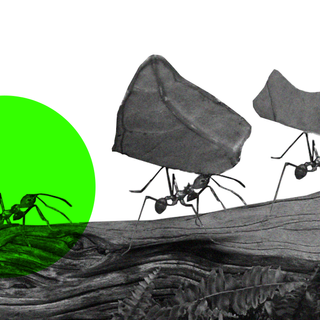What resembles a pig, a bear, that has been around for 500 million years and can survive almost anything you throw at them? The glorious tardigrades — a microscopic eight-legged animal species more commonly known as water bears or moss piglets. Scientists recently discovered a rare fossil of the tardigrades that were preserved at least 16 million years ago.
“The discovery of a fossil tardigrade is truly a once-in-a-generation event,” said Phil Barden, assistant professor of biology at New Jersey Institute of Technology and senior author of the study published in the Proceedings of the Royal Society B.
The legends of the tardigrades are stories. They have survived radiation, extreme heat, and cold supernovae. They walked away OK after someone fired tardigrades from guns. They are also the first known animals to survive the vacuum of space. They were around when the dinosaurs went extinct and may live to see our sun die in about five billion years. “They’re extremely tough little critters,” as New Atlas calls them.
“[The] tardigrades are a ubiquitous ancient lineage that has seen it all on Earth, from the fall of the dinosaurs to the rise of terrestrial colonization of plants,” the researchers noted.
Despite this hardiness, the tardigrades are vulnerable to fossilization. Studies speculate the tardigrades originated about 500 million years ago, but there is scarcely any documented record. Their tendency to rapidly decay after deaths and the microscopic size (no longer than one millimeter) make fossil preservation rare.
“They are like a ghost lineage for paleontologists with almost no fossil record. Finding any tardigrade fossil remains is an exciting moment where we can empirically see their progression through Earth history,” the study explained.
Related on The Swaddle:
Scientists Have Discovered Fossils of World’s Earliest Parasites
The current finding is only the third-known fossil record of the animals in all of history. Funnily, the discovery of the present fossil was also mainly by accident; scientists had discovered a piece of 16-million-year-old amber in the Dominican Republic but had not noticed the tiny tardigrade for months.
The fossil forms a missing clue to the tardigrades’ evolutionary history. These are the first tardigrade fossil from the Cenozoic period, the current geological era of 66 million years ago. The fossil is among the best-preserved so far, offering insights into every aspect of the animal, like claws and mouthparts. “…for the first time, we’ve visualized the internal anatomy of the foregut in a tardigrade fossil and found combinations of characters in this specimen that we don’t see in living organisms now,” Marc Mapalo, lead author of the study, said.
The biology of this genus was so distinct that the scientists gave it a new name: the Paradoryphoribius chronocaribbeus. These are relatives to the current living family of the tardigrades called the Isohypsibioidea, which are found across marine and land environments.
The findings can help us fill in the evolutionary history of tardigrades. “Not only does this allow us to place this tardigrade in a new genus, but we can now explore evolutionary changes this group of organisms experienced over millions of years.”
As surprising and rare as the discovery is, the researchers also note the sobering effect it has. “This study provides a reminder that, for as little as we may have in the way of tardigrade fossils, we also know very little about the living species on our planet today.”
This tardigrade fossil hid in plain sight. Scientists now also believe they could find more fossils in amber pieces they have already studied. Expertise and closer scrutiny can lay bare a history of these animals and what makes them so resilient.
The tardigrade refuses to give in and will most likely outlive humans. It’s now upon the shoulders of scientists to preserve its life and tales.




